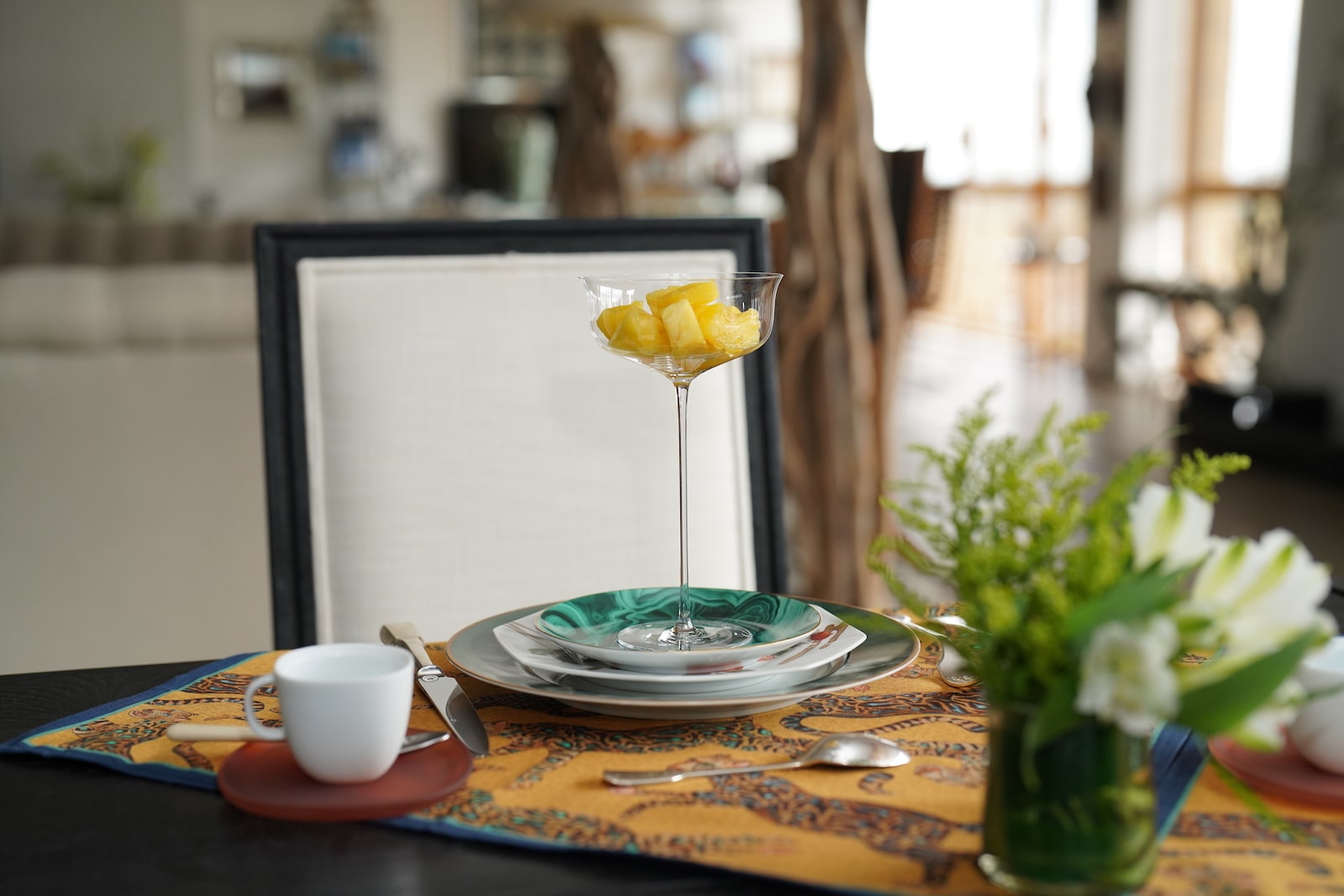Tabletop, White Wine
Prosecco: Your Guide to Italy's Sparkling Gem
Prosecco, produced in the Northeastern regions of Italy, is one of the most widely appreciated and enjoyed sparkling wines in history. Known for its effervescent bubbles and strong presence of fruit in both taste and aroma, it’s no wonder Prosecco has long been a beloved wine.
Elegant enough for the finest dining rituals, yet still practical for weekending, a bottle of authentic Italian Prosecco can transform simple pleasures into intentional experiences. From the expertise of tastemaker and home entertaining powerhouse, Fran Berger, read more about the origins of Prosecco and what makes it one of those graceful, happy-inducing luxuries.
From Vine to Glass: Prosecco's Journey
The History of Prosecco
Prosecco can be dated back thousands of years (200 BC), what was then referred to by the Romans as the legendary ‘Puchino Wine’.
The Glera grapes primarily used to produce Prosecco wine, were noted to have originated in a small village of “Prosecco” in the northeastern Italian city of Trieste in the late 1700s. 19th-century winemaker, Francesco Maria Malvolti, was the first to magnify the qualities of the Glera grape for producing sparkling wine. It became more widely known and produced throughout the years.
Today, the most authentic Prosecco is produced directly from the vineyards in the heartland of the Veneto (near Conegliano and Valdobbiadene) and Friuli Venezia Giulia regions in Italy.
Prosecco Production Process
Glera (otherwise known as Prosecco grapes), a thin-skinned green grape, is the principal grape used to produce this sparkling wine. True Prosecco is produced with at least 85% Glera grapes grown in the Veneto and Friuli Venezia Giulia regions of Italy. While it’s not considered a sweet bubbly, the grape skin gives off notes of green apple, pear, and honeysuckle.
The remaining grape varieties used to make Prosecco include verdiso, bianchetta trevigiana, perera, chardonnay, pinot bianco, pinot grigio and pinot noir.
Winemakers use a unique fermentation process for producing Prosecco - first by initially fermenting the Glera grapes into alcohol, then undergoing a second fermentation, known as the Charmat method. During the Charmat method, which differs from the Champagne method, the wine is placed into large steel tanks to trap the bubbles and create carbonation.
Prosecco Diversity: More than Just Bubbles
Detailed descriptions of different types of Prosecco wines
- Spumante (sparkling) - Spumante is the most iconic and popular type of Prosecco, known for its bright, prominent bubbles and fruity profile. Spumante is crisp and clear, with hints of green apple, pear and honeysuckle.
- Frizzante (semi-sparkling) - Frizzante Prosecco is delicately fizzy, and slightly less bubbly than Spumante, making it more openly aromatic and fruity in taste.
- Tranquillo (still) - Derived from the translated word for “quiet”, Tranquillo Prosecco is a noneffervescent wine, containing little to no bubbles. What it lacks in fizz, it makes up for in other sensory qualities. Tranquillo displays strong aromas of fresh bouquets and a light, floral taste.
Culinary Harmony: Matching Prosecco with Dishes
Prosecco is a versatile sparkling wine and can be paired with a multitude of flavors. Its fruity notes and tight bubbles create a sensational mouthfeel alongside your spicier dishes. Slightly sweeter in taste than Champagne (A standard-sized glass of Prosecco contains an average of 1.5 grams of sugar), Prosecco can also be sipped with a sweeter choice for your palette.
Generally, you want to consider the sweetness level, acidity level, and body of your Prosecco when pairing it with a meal, snack, or dessert.
- Sweetness: While Prosecco is not considered a very sweet wine, the grapes it is produced from can give it a sweeter taste. Demi-sec will be the most sweet of the Prosecco types. Sweeter-tasting Prosecco pairs perfectly with classic Italian desserts.
- Acidity: Most Prosecco has mild to medium acidity levels, which matches well with food with high-fat content, like fish and other steamed seafood.
- Body: Prosecco is typically light to medium-bodied, making it a nice balance for saltier foods, like cheeses and raw meats.
Here’s a list of a few delicious Prosecco pairings for you to try:
Appetizers
Spinach and Artichoke Dip
Spring Rolls
Marinated olives
Raw Meat - Pepperoni, Salami, Proscuitto
Cheeses - Brie, Camembert, Feta, Parmigiano-Reggiano
Seafood
Grilled Salmon
Deep-Fried Fish, Fish & Chips or Fish Tacos
Steamed Mussels or Clams
Poultry
Peking Duck
Teriyaki Chicken
Thai Curry
Desserts
Cannoli
Cheesecake
Tiramisu
Serving Tips
Serving
Save your Prosecco for the moment you are ready to serve it. It’s proper etiquette (and creates a fun, high-spirited experience around the table) to present the bottle to guests when it is time to pour.
Prosecco is best served chilled or between 40-45 degrees Fahrenheit. Fran offers more insight on how to chill your sparkling wine for serving at the right temperature.
Holding the cork in one hand, slowly twist the bottle by the base until the cork is out. Avoid shaking or popping the cork, as it may spill.
Welcome in your weekends with a classic Prosecco served in one of Fran’s signature wine glasses. True luxury meeting in the form of function and beauty, these glasses are a sensational crystal design, perfect for serving up mood-lifting memories! Savor every bubble of your Prosecco in the delicately classic Swallow Champagne Flute or transport your guests to a high-sensory wine tasting with the Heron Coupe glass.
Storing
When storing your Prosecco, you’ll generally want to keep it in an upright position and in a cool, dark space. It is best maintained at a cooler temperature, anywhere between 50 and 60 degrees Fahrenheit. Once opened, it is only good for another day or so, but keeping it cool may help preserve the bubbles of your sparkling wine.
Navigating the Prosecco Aisle
You can likely find Prosecco at any of your nearest grocery stores, as it is a popular, fizzy favorite of many. Prosecco is also a less expensive alternative to most Champagnes, making it both an affordable and authentic way to indulge in high-quality sparkling wines.
So, how can you be sure which one to choose?
Use these general tips to help you select the best choice for your wine cabinet:
- Use the 85% rule: The best, most authentic bubbly sensation of a high-quality Prosecco is to make sure that it is made with at least 85% Glera grapes. These grapes are what take your basic sparkling wine to the joy-inducing Italian Prosecco.
-
Ensure that the Prosecco is Italian: Unlike Champagne, which can only be legally referred to by name if it was produced in Champagne, France, Prosecco does not have protection requirements. This means that other regions are producing and selling it, like Australia.
To ensure you have a quality bottle of Italian Prosecco, look for a bottle labeled: “Prodotto in Italia”, or “Produced in Italy”.
-
Choose the bottle labeled DOCG or DOC: You can confirm your choice of Prosecco is of acceptable quality when it is labeled DOC (Controlled Destination of Origin) or DOCG (Denomination of Controlled and Guaranteed Origin).
DOC assures the wine was produced in Veneto and Friuli Venezia Giulia regions of northeast Italy. DOCG certifies that Prosecco was produced in the areas between Conegliano and Valdobbiadene, which is considered to have the most elite soil, limestone, and sunshine for harvesting Prosecco grapes.
- Try different brands to find your favorite: Of course, the decision always comes down to one important factor - when the wine elevates your tastebuds and environment in one sip. Experiment with different types of Prosecco, from sparkling to still, to find the right one for you.
Reflections on Prosecco: Final Sips and Thoughts
Prosecco is produced from Italy’s most elite vineyards and generations of winemaking techniques and brought directly to your dining table. Keep a few of your favorite bottles of Prosecco chilled and, to make any occasion special...all you’ll need to do is pour!
Discover many more touchpoints of fine living with Fran’s distinctive, hand-picked collections and signature glassware when you visit the Fran Berger Living website.
























